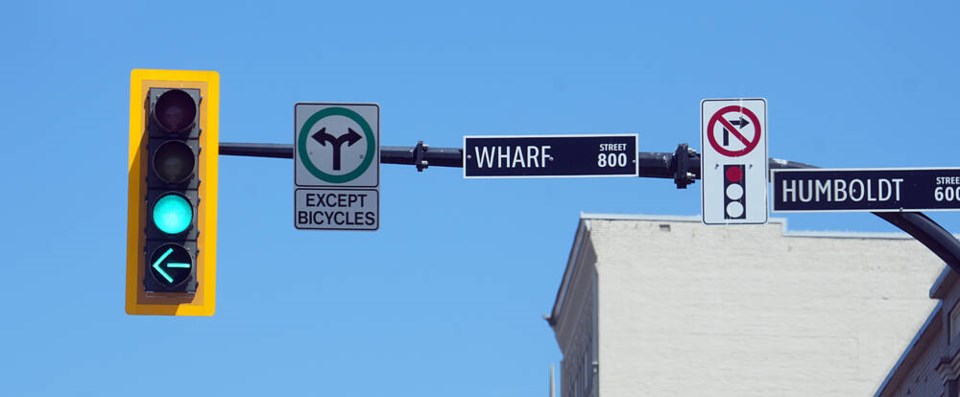Roundabouts work best when they are large enough to allow for more reaction time when mistakes are made

We are a society of rules, especially when it comes to driving. In B.C. when we hit the road we are largely guided by the 313 sections of our motor vehicle act — covering everything from how fast you can drive to exiting your driveway safely. There’s also another 48 divisions in the motor vehicle act regulations — governing how your mufflers and tail lights have to work.
Yet despite all the weight of musty law there are still many day-to-day conundrums that drivers write to me about.
For example, roundabouts are still causing grief. As I mentioned last week they are great at preventing intersection crashes. But they aren’t a panacea. They work because of the essential rule requiring you to “yield to traffic in the circle.” But what if some people don’t do that?
The best example is at Cook and Southgate in Victoria. Traffic flowing on Cook street vastly outweighs the amount of traffic trying to enter from Southgate. Cook street drivers have incorrectly assumed a right of way because they are travelling on the busier road, despite the roundabout signs telling them otherwise. This kind of mismatched traffic flow actually means that a roundabout is not a suitable form of control here.
Roundabouts work best when they are large enough to allow for more reaction time when mistakes are made and should be placed where traffic flow is roughly equal from all directions. You could stand your ground and enter the roundabout no matter what’s coming at you from the higher volume street, but you’re taking a risk.
Four-way stop intersections still crop up as a conundrum. They’re easy when it’s only two vehicles at play. If you arrive at approximately the same time as the car on the cross street, you yield to the vehicle on your right. Note the word “approximately.” It’s not a race to beat the other driver because you came to your stop sign half a second before the other person — you both arrived approximately. That means the driver on your right still has the right of way.
However, lots of intersections covered by 4-way stop signs are busy. There’s a lot more to keep track of when cars are moving in from every direction. The basic rule is always: “first one in — first one out,” but even then it’s hard to keep track sometimes. Lots of times two cars will move out at the same time and then slam to a halt — they’ve both lost track of who’s next.
My suggestion here is to wave the other car through. Waving to grant the other driver the right of way to proceed is courteous and is the easiest way to prevent a collision. Plus it only takes a half second to let the other car go.
Remember also that if you’re also making a left turn at a four way you have the additional responsibility to yield to a vehicle wanting to go straight through coming from the opposite direction. This is where taking some extra time and waving someone else through if necessary can really clear up potential confusion.
Next, the conundrum of the driver turning right on a red light at the same time traffic is coming through with an advance left turn green arrow from the opposite side of the intersection. Red light right turners often assume they can just turn into the open curb lane as the left turners enter the same road. That’s a big assumption.
That right turn driver with a red must yield the right of way to all pedestrians and vehicles lawfully proceeding as directed by the signal at the intersection, in this case the green advanced turn arrow. No exception is made here just because the right turner has an open curb lane. Go to Royal Oak Drive and Elk Lake Drive if you want to see this rule being broken every day.
Finally there’s the conundrum of when you can make a left turn on a red light. You can do that in B.C. provided one, or both, of the streets is a one way street and that turn is made by turning onto the one way street only. So you can turn left on a red from a two way street onto a one way street. You can also turn left on a red from one way onto another one way provided there are no signs telling you otherwise. Of course you must yield to all opposing vehicles and pedestrians first.
Those kinds of left turns are very tricky, especially with the amount of bike lanes on our streets today. You should really only make a red light left turn when you’re absolutely certain everything is completely clear.
[email protected]